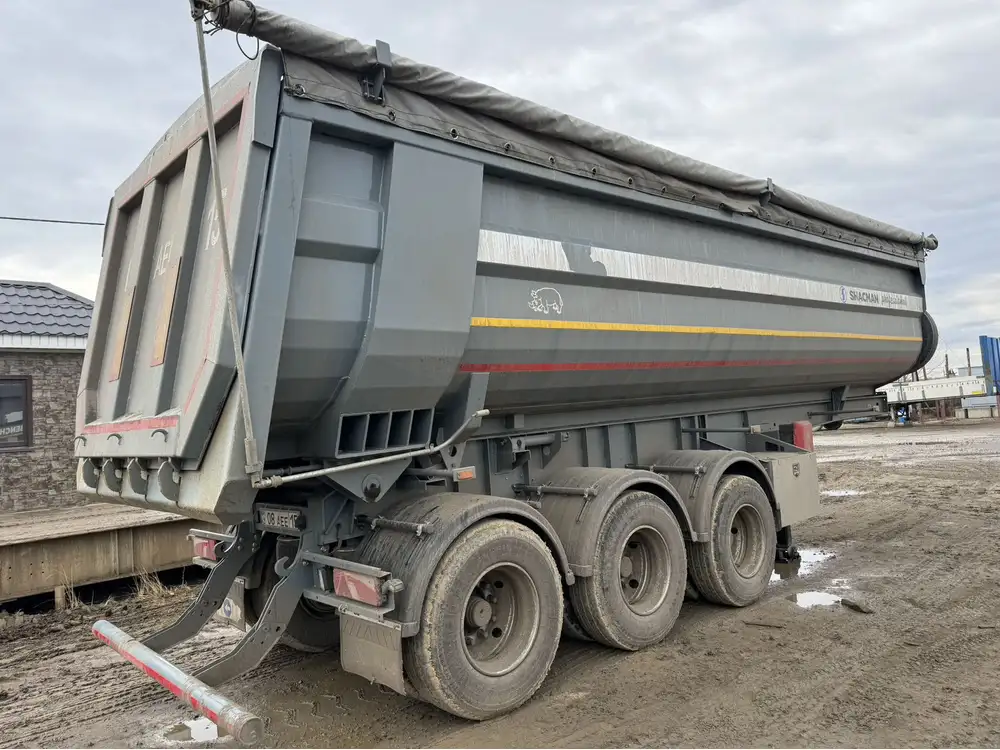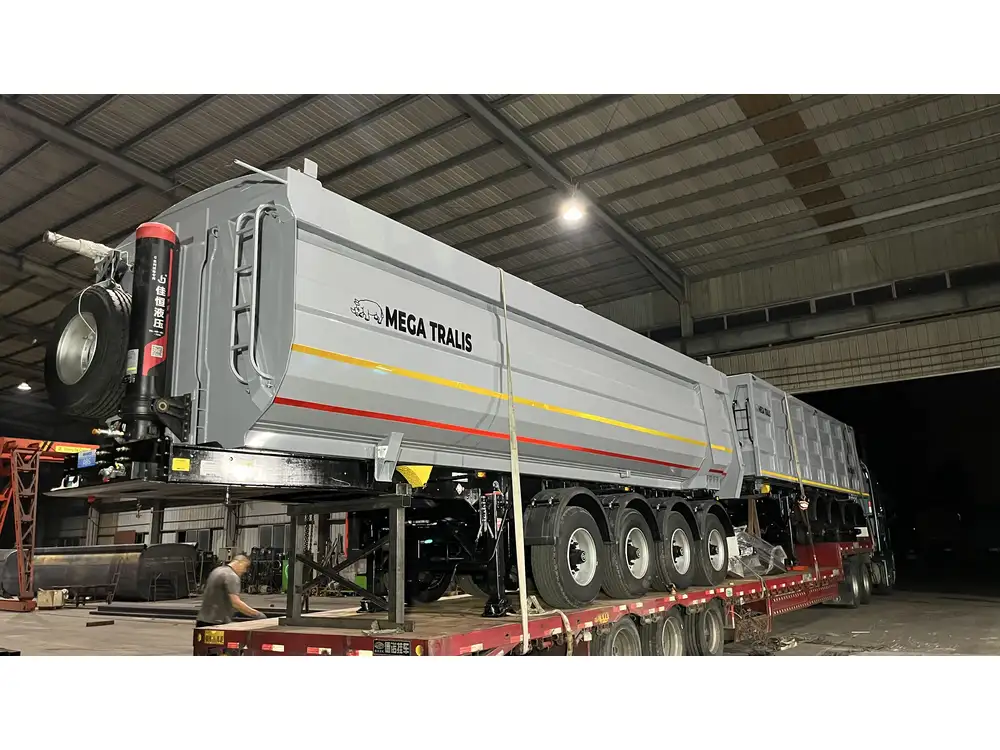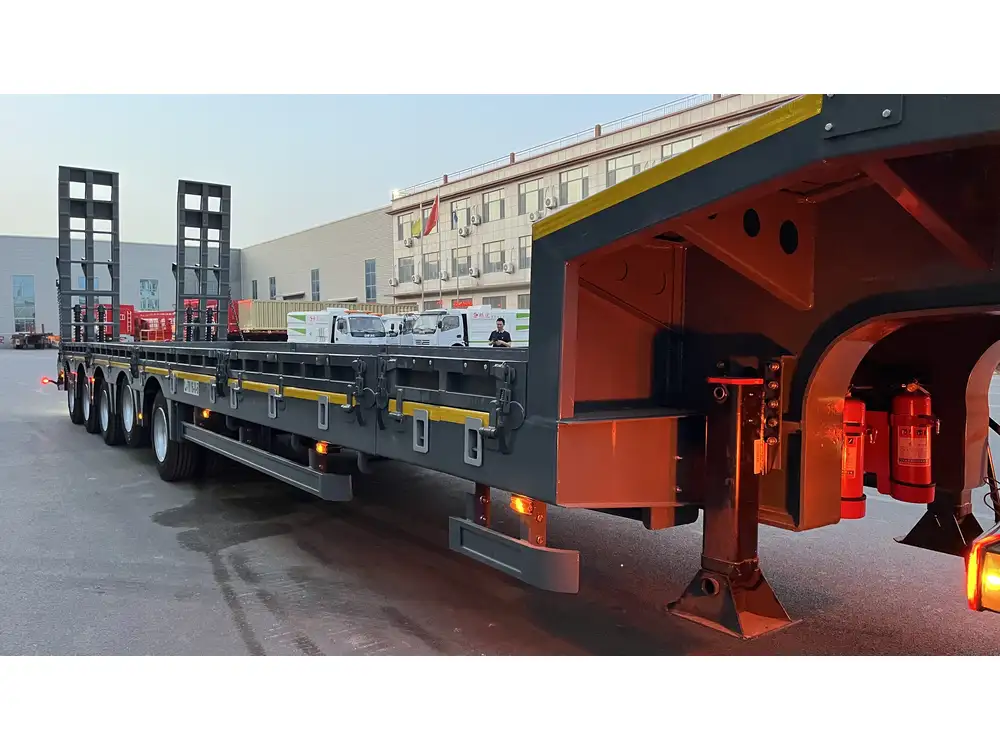When it comes to transportation and logistics, understanding the specifications of vehicles, particularly semi-trailers, is crucial. Among the fleet of semi-trailers, the 53-foot model has emerged as the standard for many freight carriers in North America. In this article, we delve into the overall dimensions of a semi-trailer and the implications for loading, transport regulations, and road safety.
The Standard Length of a Semi with a 53-Foot Trailer
To begin with, let’s establish the basic dimensions of a semi-truck configured with a 53-foot trailer. While the trailer itself measures 53 feet in length, it’s essential to account for the tractor unit (the front part of the semi that pulls the trailer) when discussing the overall length.
Breakdown of Dimensions
| Component | Measurement |
|---|---|
| Trailer Length | 53 feet |
| Tractor Length | 20-25 feet |
| Total Overall Length | 73-78 feet |
Thus, when you combine a 53-foot trailer with an average tractor unit ranging from 20 to 25 feet, you find that the total length typically measures anywhere between 73 to 78 feet.

Why Length Matters: Regulatory Compliance
Legal Length Limits
In most states across the U.S., the maximum allowable length for a combination vehicle (tractor and trailer) varies but is often capped at 75 to 80 feet, depending on regional regulations. It is critical for carriers and drivers to be aware of these regulations to avoid hefty fines or operational inefficiencies.
- Interstate Commerce: For routes crossing state lines, sticking to the federal regulations is essential, which typically permit a maximum length of 75 feet.
- Intrastate Commerce: Some states may enforce stricter or more lenient laws in terms of overall vehicle length.
Overhanging Load and Extensions
Understanding the complete dimensions of a semi with a 53-foot trailer allows for careful consideration of how loads are arranged. Instances of overhanging loads can lead to exceeding legal limitations, and therefore, knowing the precise measurements becomes paramount.

Impact on Trailer Maneuverability
The overall length of a semi-truck equipped with a 53-foot trailer has significant implications for driving, transportation, and maneuverability.
Turning Radius
The longer the combination vehicle, the greater the turning radius will be. Below is a comparison that considers turning radius based on trailer length:
| Trailer Length | Average Turning Radius |
|---|---|
| 48 feet | 50-55 feet |
| 53 feet | 55-60 feet |
| 57 feet | 60-65 feet |
A truck with a 53-foot trailer must accommodate a tighter turning radius which could limit accessibility in urban or densely populated areas. Drivers must often anticipate these challenges, especially when dealing with loading docks or tight intersections.
Highway Performance
The length can also impact performance on highways. Indeed, longer vehicles may have stability changes at higher speeds, emphasizing the need for cautious driving practices and optimal load distribution. Transport businesses must keep these factors in mind when planning routes.

Load Capacity and Weight Considerations
Understanding the volumetric capacity of a 53-foot trailer, in tandem with its load distribution requirements, is just as paramount as knowing its length.
Average Capacity
A standard 53-foot trailer can hold:
- Volume: Approximately 3,800 cubic feet.
- Weight: Up to 45,000 pounds of cargo, considering weight limits.
Importance of Proper Loading
Correct load distribution is critical for safety and compliance. Overloading one part of a semi-trailer can lead to tipping or increased wear on tires and brakes, posing risks to the driver and other road users.

The Importance of Regulations: DOT and Safety Standards
The Department of Transportation (DOT) has outlined several regulations concerning the operations of semi-trailers, especially regarding length. Here are some vital points to consider:
- Maximum GVWR: Gross Vehicle Weight Rating measures how much the vehicle can legally weigh considering its load.
- Inspections and Maintenance: Regular assessments help ensure that the vehicle complies with structural integrity standards.
This regulatory framework is designed to safeguard not only the driver but also all road users.
Loading and Unloading Practices for 53-Foot Trailers
Common Practices
The process of loading and unloading a 53-foot trailer requires strategic handling to maximize space while adhering to safety regulations.
| Loading Technique | Best Practices |
|---|---|
| Weight Distribution | Balance the load to prevent shifting. |
| Securing Loads | Use straps and tie-downs for stability. |
| Utilizing the Full Length | Stack boxes to optimize vertical space. |
Effective loading not only increases efficiency but also mitigates the potential for road hazards during transport.

Advantages of Using 53-Foot Trailers in Logistics
Despite the discussions surrounding their dimensions and regulations, 53-foot trailers come packed with advantages, making them a staple in freight transport.
Cost-Effective Delivery
With larger capacity, logistics companies can carry more freight per trip, which translates to lower delivery costs:
- Fewer Trips: A single haul with a 53-foot trailer may replace several trips with smaller trucks.
- Fuel Efficiency: By optimizing load per trip, companies can save on fuel expenditures.
Versatility in Cargo Types
These trailers are adept at handling a diverse array of cargo types, from dry goods to refrigerated items, thus paving the way for multi-faceted shipping solutions.

Enhanced Safety Features
Modern 53-foot trailers come equipped with advanced safety features, including:
- Anti-lock Braking Systems (ABS): Enhances safety during emergency stops.
- Stability Control Systems: Helps maintain vehicle balance under challenging conditions.
Common FAQs Regarding Semi Length and Trailers
How does the length of a semi-trailer affect fuel efficiency?
The overall length does play a role in aerodynamics. Longer trailers can potentially create more drag, but when fully loaded, they optimize transport efficiency. It’s crucial to strike a balance between load capacity and vehicle length to maximize fuel usage.

Are there benefits to using shorter trailers?
Yes, shorter trailers may offer easier maneuverability, especially in urban settings, and can be more versatile in accessing tight loading docks. However, the trade-off is in load capacity and the number of trips needed.
How does a 53-foot trailer compare to smaller trailers?
A 53-foot trailer boasts significant advantages in terms of capacity and efficiency. While 48-foot trailers may be more flexible in certain urban environments, they typically require more trips to match the payload of a 53-foot trailer.
Conclusion
In the world of freight transportation, understanding how long a semi with a 53-foot trailer stands is fundamental. With an overall length of 73-78 feet, this combination highlights the necessity for compliance with regulations and careful consideration in loading practices. The ongoing adaptation to industry best practices, safety regulations, and operational efficiencies positions these vehicles as indispensable assets in logistics. Businesses must remain vigilant to ensure that they leverage the potential of 53-foot trailers effectively while staying within legal frameworks to achieve optimal outcomes.



